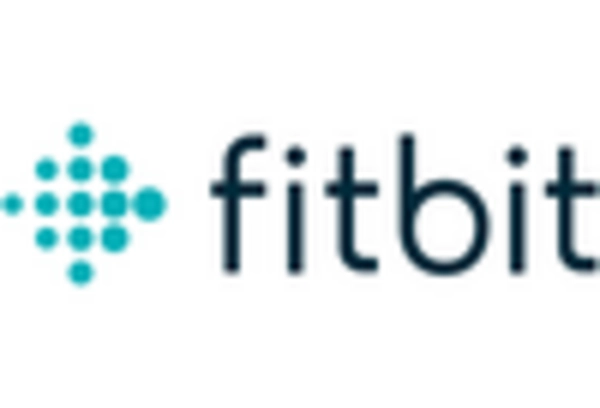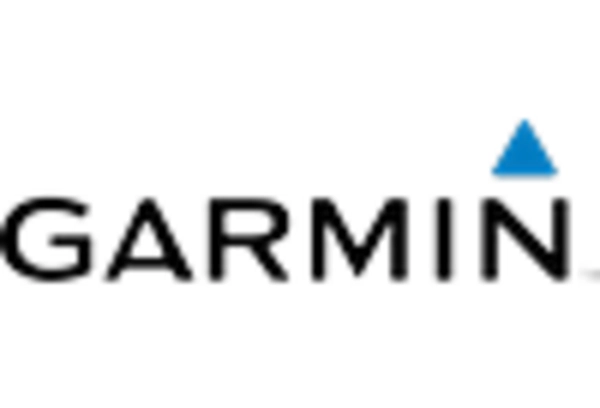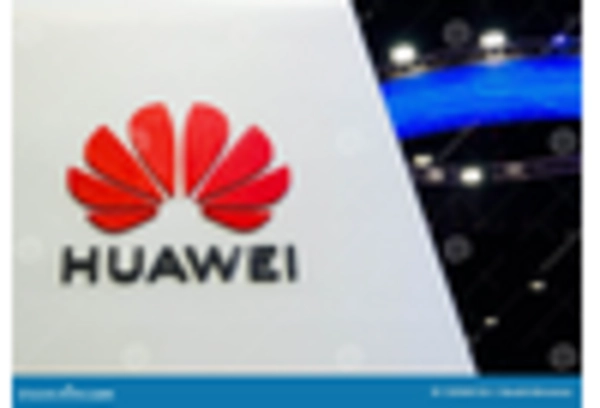The wearable technology market is currently characterized by intense competition and rapid innovation, driven by increasing consumer demand for health monitoring and fitness tracking devices. Major players such as Apple Inc (US), Samsung Electronics (KR), and Xiaomi Corp (CN) are at the forefront, each employing distinct strategies to capture market share. Apple Inc (US) continues to leverage its ecosystem, integrating wearables with its existing products, while Samsung Electronics (KR) focuses on diversifying its product range to appeal to various consumer segments. Xiaomi Corp (CN) emphasizes affordability and accessibility, positioning itself as a leader in the budget segment, which collectively shapes a competitive environment that is both dynamic and multifaceted.
Key business tactics within this market include localizing manufacturing and optimizing supply chains to enhance efficiency and reduce costs. The competitive structure appears moderately fragmented, with a mix of established brands and emerging players vying for consumer attention. This fragmentation allows for innovation and differentiation, as companies strive to offer unique features and functionalities that resonate with health-conscious consumers.
In October 2025, Apple Inc (US) announced the launch of its latest smartwatch model, which features advanced health monitoring capabilities, including blood glucose tracking. This strategic move not only reinforces Apple's commitment to health technology but also positions it to capture a growing segment of consumers interested in chronic disease management. The integration of such features is likely to enhance user engagement and loyalty, further solidifying Apple's market position.
In September 2025, Samsung Electronics (KR) unveiled a partnership with a leading fitness app developer to enhance the functionality of its wearables. This collaboration aims to provide users with personalized fitness plans and real-time health insights, thereby enriching the user experience. Such strategic alliances are indicative of a broader trend where companies seek to integrate software and hardware solutions, enhancing the overall value proposition of their products.
In August 2025, Xiaomi Corp (CN) expanded its product line by introducing a new series of affordable fitness trackers aimed at younger consumers. This move reflects Xiaomi's strategy to penetrate deeper into emerging markets, where price sensitivity remains a critical factor. By offering high-quality yet affordable devices, Xiaomi is likely to attract a larger customer base, thereby increasing its market share in the competitive landscape.
As of November 2025, current trends in the wearable technology market include a strong emphasis on digitalization, sustainability, and the integration of artificial intelligence (AI) into devices. Strategic alliances are increasingly shaping the competitive landscape, as companies collaborate to enhance product offerings and improve user experiences. Looking ahead, competitive differentiation is expected to evolve, with a shift from price-based competition to a focus on innovation, technological advancements, and supply chain reliability. This transition suggests that companies will need to invest in R&D and forge strategic partnerships to maintain a competitive edge in an ever-evolving market.
















Leave a Comment